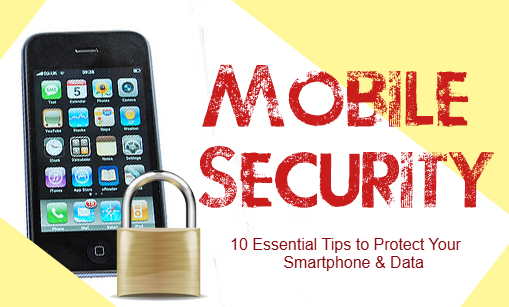
1. Create a Strong Password/PIN:
Why? It keeps trespassers away from your device. How to do it
How to do it:
- iPhone: Go to Settings > Face ID & Passcode (or Touch ID & Passcode) > Turn Passcode On > Enter a strong passcode.
- Android: Go to Settings > Security > Screen lock > Select PIN, Password, or Pattern, and create a strong one.
2. Activate a Two-Factor Authentication (2FA)
Why? This is the second level of the security added when needing to verify through something else such as a code sent to your phone. How to do it.
How to do it:
- iPhone: Go to Settings > [your name] > Password & Security > Two-Factor Authentication > Turn on.
- Android: Open the Google Settings app > Security > 2-Step Verification > Turn on.
3. Update Your OS
Why? Updates always fix bugs, while hackers can exploit them. How to do it
How to do it:
- iPhone: Go to Settings > General > Software Update > Download and install any available update.
- Android: Go to Settings > System > Software Update > Check for updates and install.
4. Use Trusted App Stores
Why? Apps downloaded from unofficial stores may be infested with malware
How to do it:
- Only download apps from the Apple App Store (iPhone) or Google Play Store (Android)
- Check app reviews and ratings before downloading them
5. Install Antivirus/Security App
Why? It can help detect and protect against malware and phishing attempts
How to do it:
- Download and install trusted security apps such as Norton Mobile Security, McAfee Mobile Security, or Avast Mobile Security from the official app stores
6. Restrict App Permissions
Why? The apps seem to ask access unnecessarily to data (location, contacts, camera, etc.).
How to do it:
- iPhone: Go to Settings > Privacy > Select an app and adjust permissions.
- Android: Go to Settings > Apps > Select an app > Permissions > Adjust.
7. Activate Remote Wipe and Tracking Location
Why? Being able to remote destroy your data and locate it is a great feature when you lose your phone or it gets stolen
How to do it:
- iPhone: Go to Settings > [your name] > Find My > Turn on Find My iPhone and Send Last Location.
- Android: Go to Settings > Security > Find My Device > Turn it on.
8. Don’t Perform Sensitive Tasks Over Open Wi-Fi Networks
Why? Public Wi-Fi is potentially unsafe when doing personal transactions
How to do it:
- Avoid using banking apps, entering passwords, or making financial transactions while on public Wi-Fi.
- Consider using a VPN (Virtual Private Network) to encrypt your internet traffic.
9. Backup Your Data Regularly
Why? In the event that the phone gets lost, stolen, or damaged, you won’t lose your important data.
How to do it:
- iPhone: Go to Settings > [your name] > iCloud > iCloud Backup > Turn on iCloud Backup and Back Up Now.
- Android: Go to Settings > System > Backup > Turn on Back up to Google Drive.
10. Careful with Links and Emails (Phishing Protection)
Why? Caution is advised to avoid clicking on suspicious links that may be able to steal your data.
How to do it:
- Don’t click on suspicious links in emails or text messages.
- Always verify the sender’s email or number before opening a link or downloading an attachment.
Bonus: Use a Secure Lock Screen
Why? Because a lock screen maintains the security of your device if it is ever lost by you.
How to do it:
- iPhone: Go to Settings > Display & Brightness > Auto-Lock > Set the shortest time possible.
- Android: Go to Settings > Security > Screen Lock > Choose Pattern, PIN, or Password.
Conclusion: Stay Secure, Stay Safe
Mobile security needn’t be all that complicated. By following these few simple steps, you can protect yourself against hacking, data theft, and other cyber threats. All that keeping a smartphone secure involves is plenty of strong protection, timely updates, and trusted tools for safeguarding information.
Stay vigilant and make mobile security a regular habit!
LEAVE A COMMENT
Our Services
Discover our range of professional services designed to meet your needs. We provide expert solutions with precision and excellence to help you achieve your goals.


Comments (0)
No comments yet. Be the first to comment!